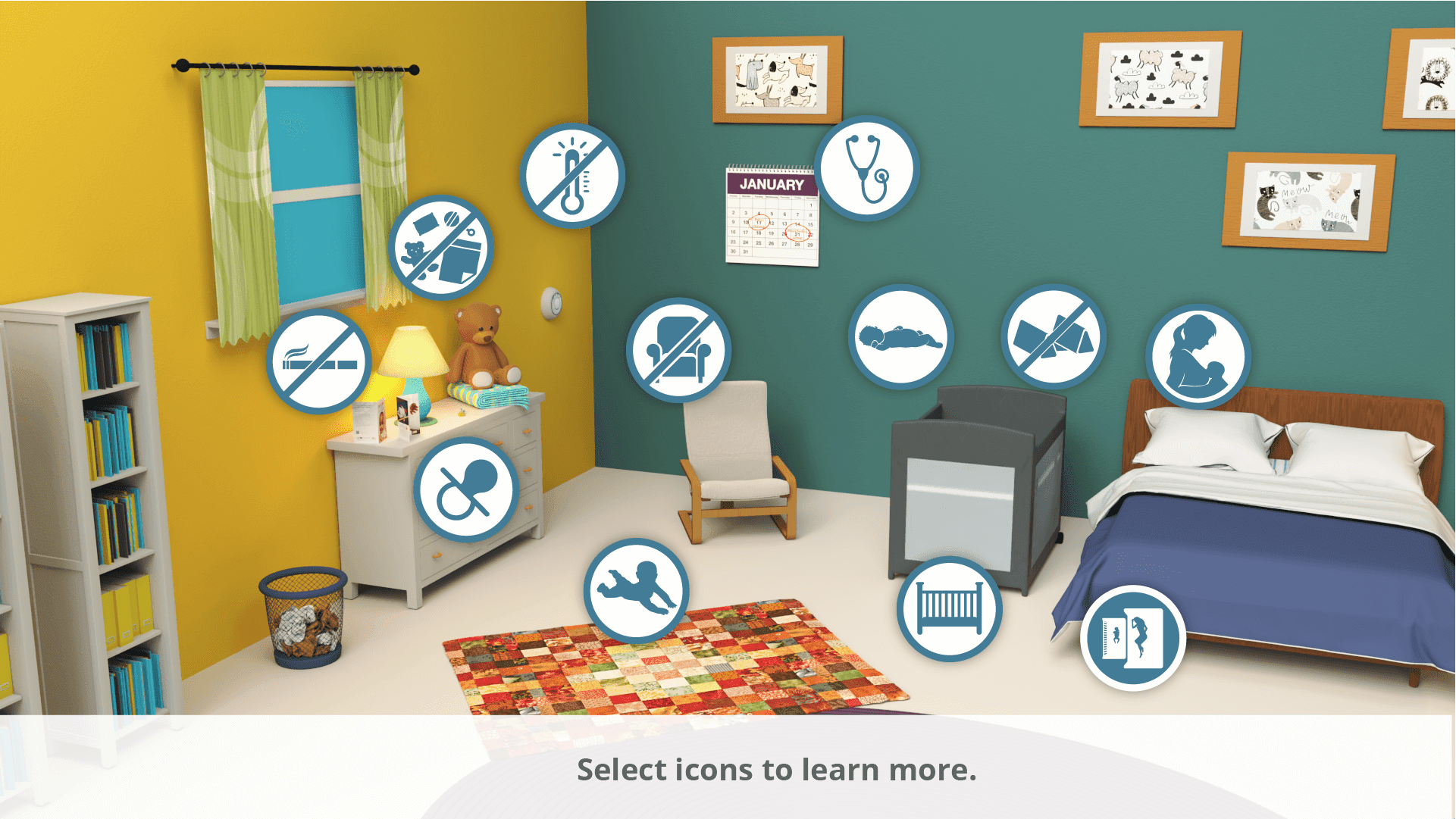Back to Sleep Tips
The Safe to Sleep® campaign is a registered trademark of the U.S. Department of Health and Human Services.They make the very important recommendation for safe infant sleep: always placing baby to sleep on his or her back, for naps and at night. The back sleep position is the safest for all babies, including those born preterm.
It is especially important to note that babies who are used to sleeping on their backs, but who are then placed to sleep on their stomachs, like for a nap, are at a much higher risk for Sudden Infant Death Syndrome (SIDS). Parents should make sure all baby’s caregivers—babysitters, grandparents, childcare workers, and others—know this key safe sleep recommendation and use it all the time to reduce the risk of SIDS.
It can be easier to remember the safe infant sleep recommendations if you incorporate them into a routine. Healthcare providers can work with parents and caregivers to reinforce the importance of back sleeping and help them to develop naptime and nighttime routines for baby. A simple nighttime routine could include these steps:
- Breastfeeding: Babies who are breastfed or fed expressed breast milk are at a lower risk for SIDS than babies who were never fed breast milk. If you bring baby into your bed to feed, and there is a chance you might fall asleep, remove all soft items and bedding from the area.
- Cuddle time: If you bring baby into bed for bonding time, and there’s a chance you might fall asleep, make sure to remove soft items and bedding from the area.
- Back Sleeping: Place baby to sleep on his or her back for every sleep time, including naps and at night.

Check out this video from Growing with The Gardners for a full example of a nighttime routine that you can use to help parents and caregivers develop their own plan to practice safe infant sleep. You can also download and share photos from the Safe to Sleep® campaign that show babies sleeping on their backs in safe sleep environments.

New Digital Resource
Our updated Interactive Room is a revised online resource that allows users to explore a safe sleep environment and learn how to create one in their homes. Users can take a virtual tour of a safe sleep environment, zoom in and out on different parts of the room, and learn about AAP’s recommendations for safe infant sleep. For example, selecting the crib icon provides information about crib safety and what should and should not be with baby in the crib. It’s a great way to show grandparents, babysitters, and other caregivers how to create a safe sleep environment, step by step.


Ask the Expert

The National Action Partnership to Promote Safe Sleep (NAPPSS) coalition developed the Building on Campaigns with Conversations modules to help healthcare professionals implement and promote safe infant sleep and breastfeeding practices. The following information comes from Module 3.
Q: Why is it important for babies to sleep on their backs until 1 year of age?
A: Experts recommend that babies be placed on their backs for every nap and at bedtime until 1 year of age. This recommendation was made because of the evidence:
- Babies who sleep on their stomachs (called prone sleeping) have a 230% to 1,300% greater risk of sleep-related death. In addition, if a baby is placed on the side to sleep but ends up on his or her stomach, the risk of sleep-related death is 8.7 times greater than that for babies placed on their backs to sleep.
- Prone sleeping increases the risk of rebreathing in the same air that baby breathed out, under the baby’s face, because babies may not rouse or move their heads. When this happens, babies can end up with increasing levels of carbon dioxide in their blood—carbon dioxide is what we breathe out—and not enough oxygen. This can be fatal.
- Prone sleeping also increases the risk of the baby’s getting overheated. When prone, the baby gives off less heat to control temperature. Overheating has been linked to greater risk for unexpected death.
- In young babies (2 to 3 months of age), prone sleeping changes how the nervous system controls the cardiovascular system (how hearts function) during sleep. This can result in the brain receiving less oxygen.
- A baby who usually sleeps on the back but is then placed on the stomach for sleep—by a different caregiver, for example—has a higher risk for SIDS the first and every time baby is put on the stomach to sleep. Studies have reported an 8.7 to 45.4 times greater risk of sleep-related death for babies in this situation. This finding highlights the importance of everyone putting baby to sleep on his or her back for all sleep times.
Once babies can roll over in both directions on their own, they should still be placed on their backs to sleep to start, but do not need to be returned to the back position if they roll over on their own.

Placing babies on their backs to sleep is not associated with risks for other problems. For example, there is no increase in aspiration (inhaling of fluids into the lungs) or complaints of vomiting when babies are placed on their backs to sleep.
In the past, experts said that babies could sleep on their sides. That sleeping position is no longer recommended, because babies can too easily roll onto their stomachs from the side position.
Source:Safe to Sleep® Website
Safe to Sleep® is a registered trademark of the U.S. Department of Health and Human Services.